Earth and Mars from Satellites
ALL THE SATELLITES ORBITING EARTH
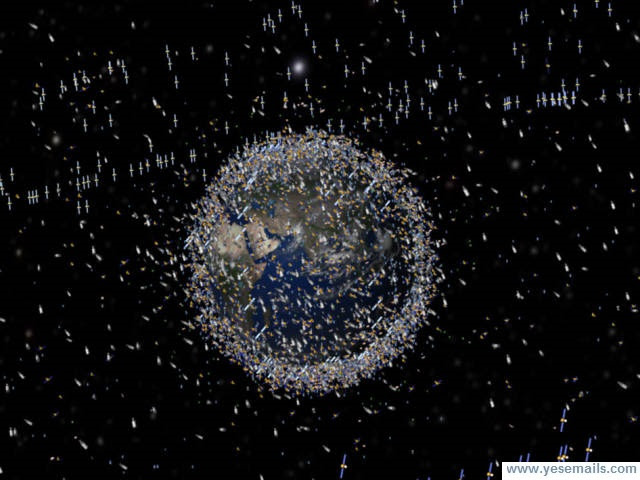 About a thousand satellites are currently operational and thousands of unused satellites and satellite fragments orbit the Earth as space debris. Since the Russians launched Sputnik in 1957, more than 40 countries have used the satellite launching capabilities of ten nations. Common uses for satellites include military and civilian Earth observation satellites, communications satellites, navigation satellites, weather satellites, and research satellites.
About a thousand satellites are currently operational and thousands of unused satellites and satellite fragments orbit the Earth as space debris. Since the Russians launched Sputnik in 1957, more than 40 countries have used the satellite launching capabilities of ten nations. Common uses for satellites include military and civilian Earth observation satellites, communications satellites, navigation satellites, weather satellites, and research satellites.
The following remarkable photographs from orbiting satellites capture ways people have transformed the face of Earth, for better or worse. Benjamin Grant catalogs satellite images on his Instagram account called Daily Overview. Grant uses imagery taken from DigitalGlobe, a collection of Earth imaging satellites that provide data to services like Google Earth. Some of the images have been enlarged to view more detail.
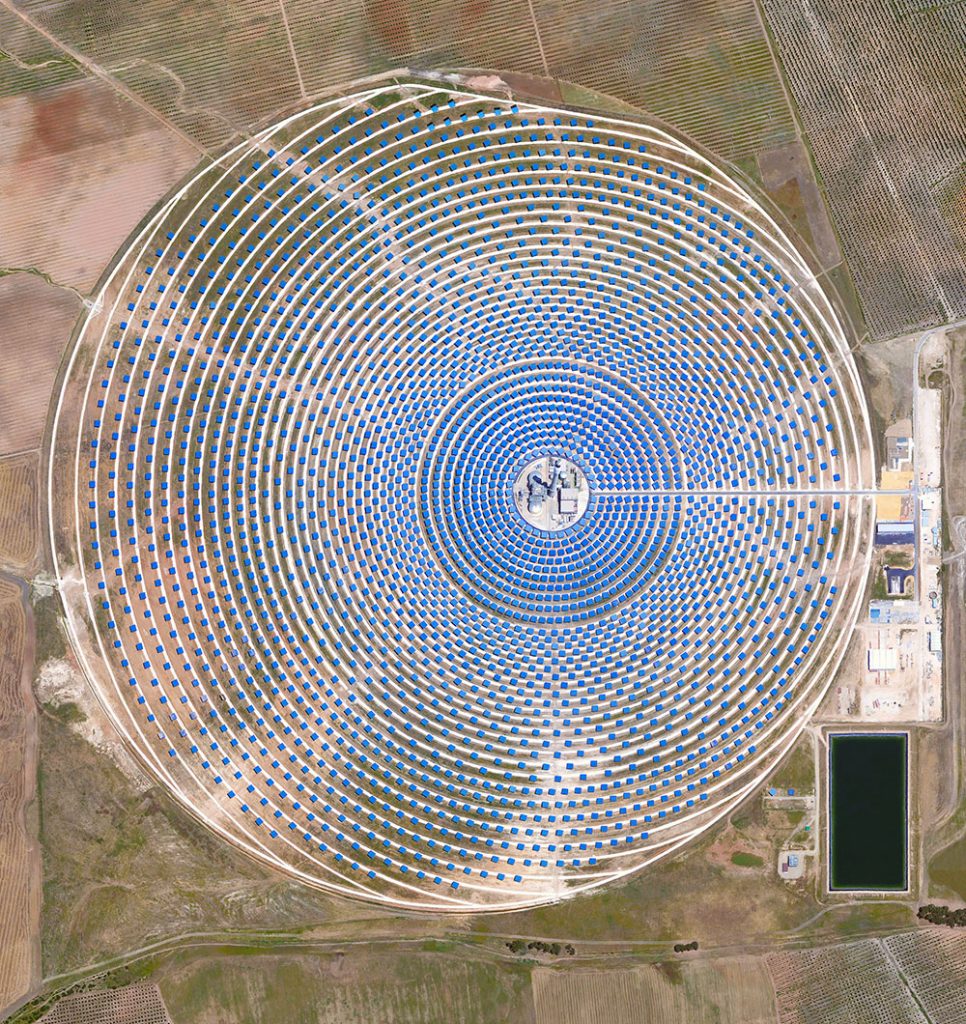
Gemasolar Thermosolar Plant in Seville, Spain. The solar concentrator contains 2,650 mirrors that focus the sun’s thermal energy to heat molten salt flowing through a 140-metre-tall (460-foot) central tower. The molten salt then circulates from the tower to a storage tank, where it is used to produce steam and generate electricity.

Hagadera, seen here on the right, is the largest section of the Dadaab refugee camp in northern Kenya and is home to 100,000 refugees. To cope with the growing number of displaced Somalis arriving at Dadaab, the UN has begun moving people into a new area called the LFO extension, seen on the left. Dadaab is the largest refugee camp in the world with an estimated total population of 400,000.
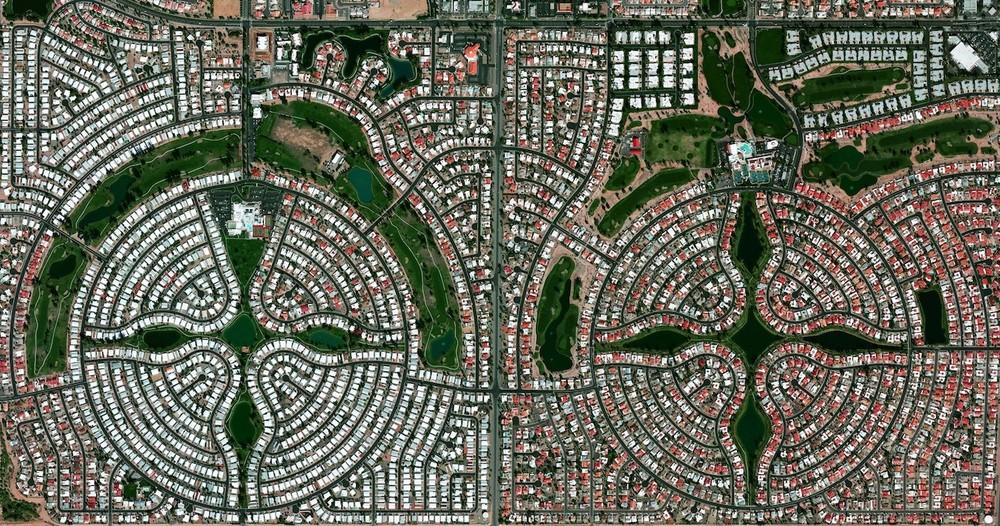
Sun Lakes, Arizona, USA is a planned community of approximately 14,000 residents, most of whom are senior citizens.
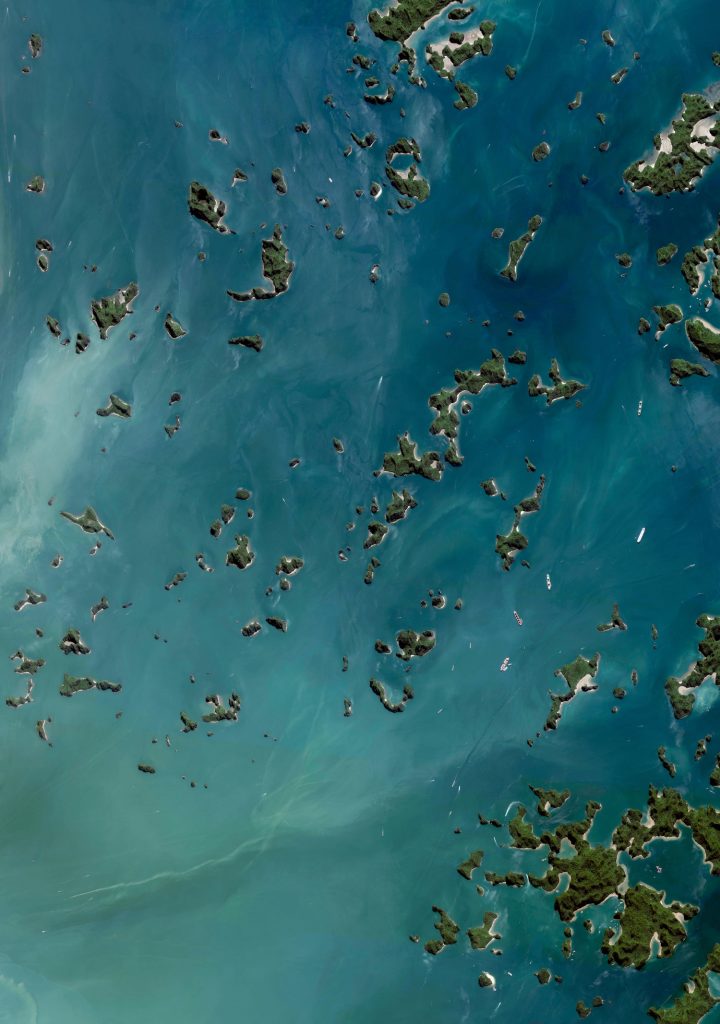
Hạ Long Bay, located in the Quảng Ninh Province of Vietnam, is a stunningly beautiful destination. Here, towering limestone pillars and tiny islands topped by a rich, green forest rise from the beautiful waters of the Gulf of Tonkin.
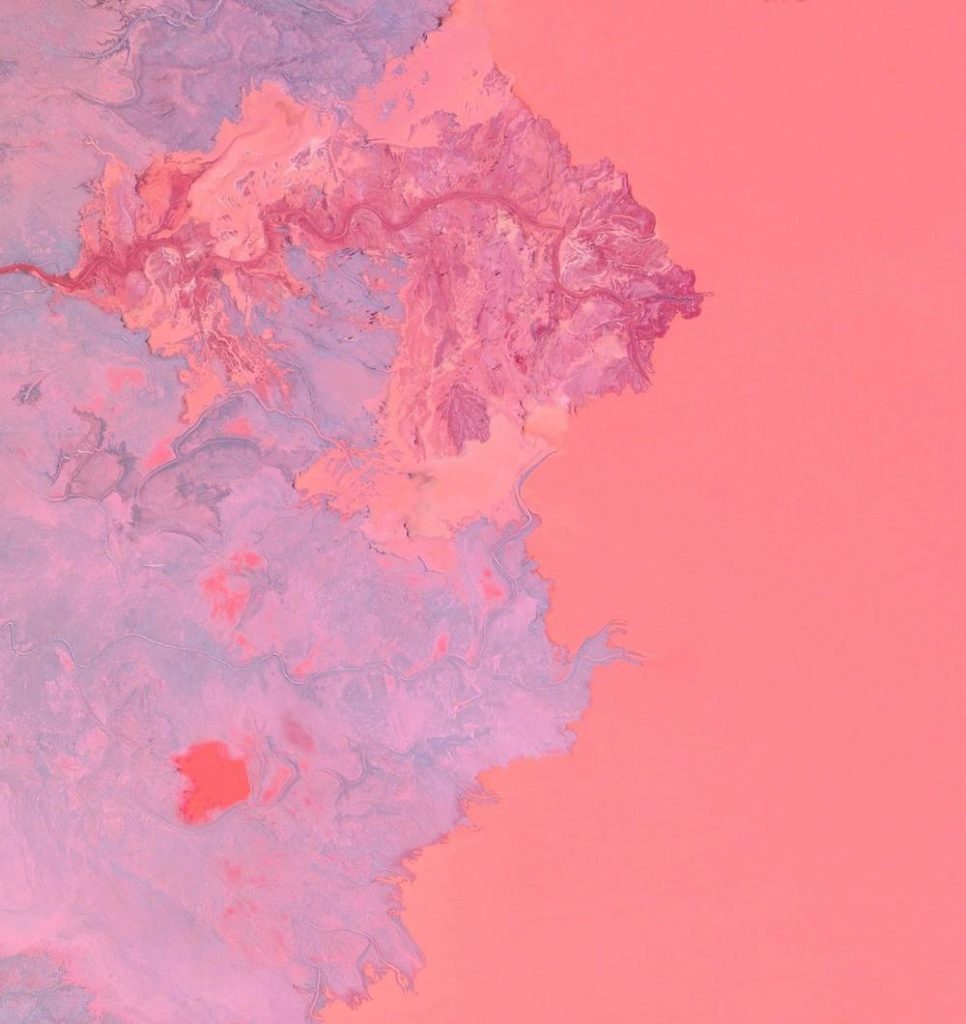
Tailings are the waste and by-products generated by mining operations. The tailings seen here were pumped into the Gribbens Basin, fron iron ore mines in Michigan, USA. Once the materials are pumped into the pond, they’re mixed with water to create a sloppy form of mud known as slurry. For a sense of scale, this Overview shows approximately 2.5 square kilometres (1 square mile) of the basin.
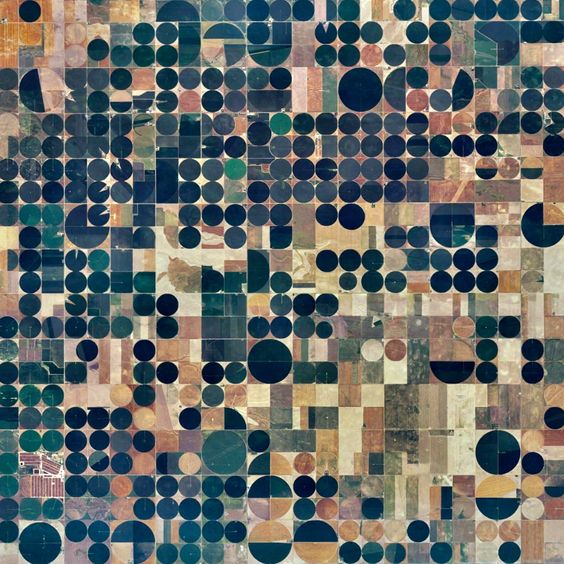
Goodland, Kansas, USA. The circles seen here are created when lines of sprinklers, powered by electric motors, rotate 360 degrees to evenly irrigate crops.
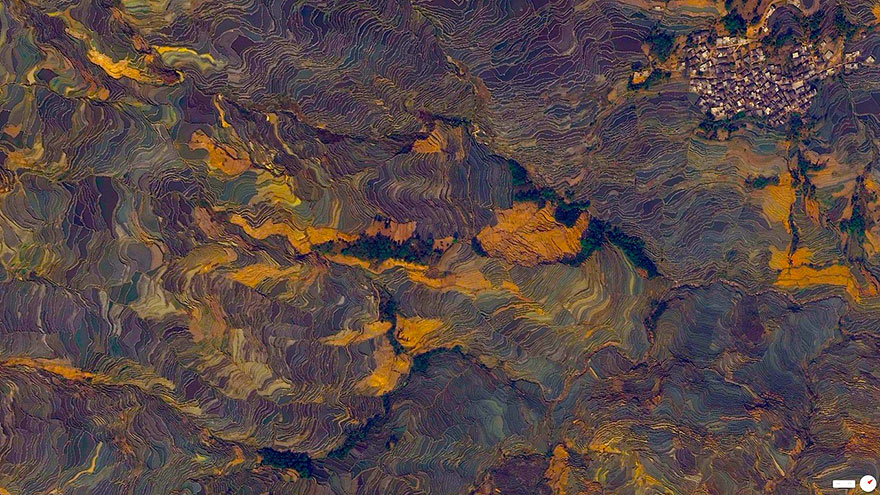
Rice paddies, constructed in steps, cover the mountainsides of Yuanyang County, China. Cultivated by the Hani people for the last 1300 years, the slope of the terraces varies from 15 to 75 degrees with some having as many as 3,000 steps.
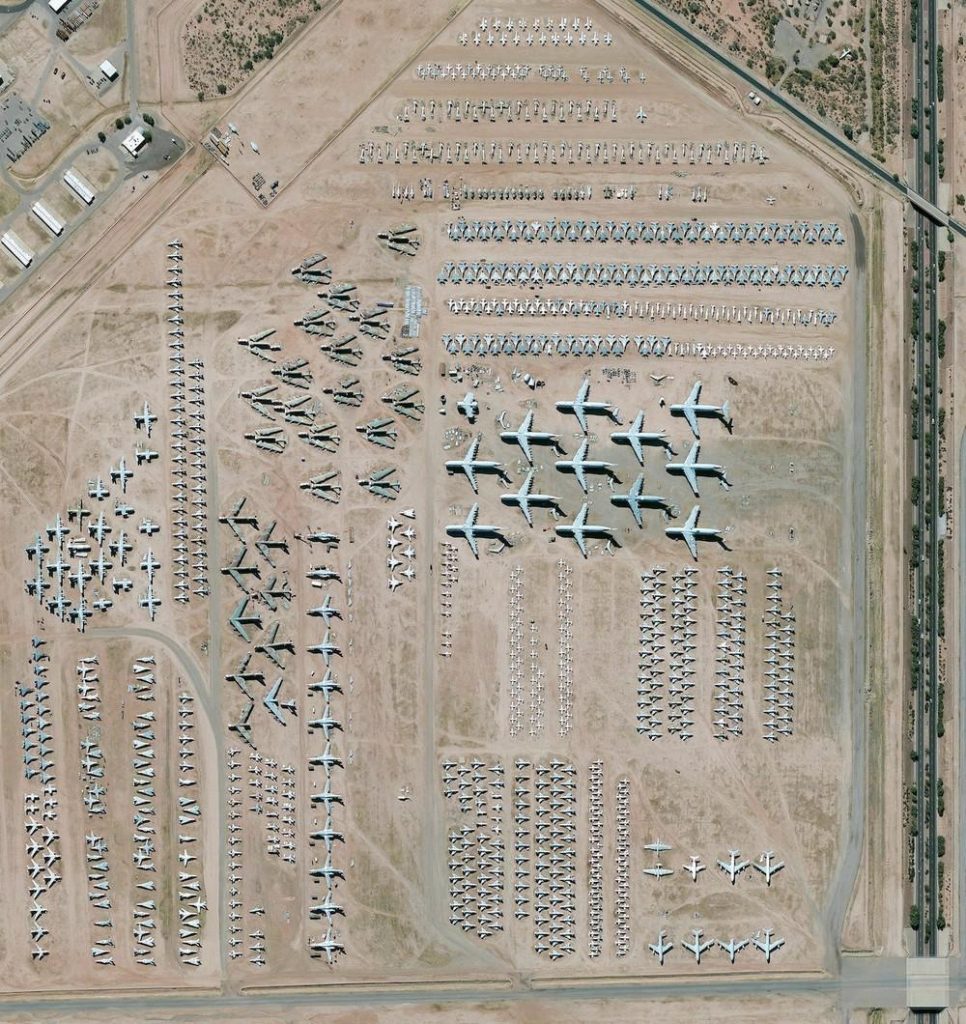
The largest aircraft storage and preservation facility in the world is located at Davis-Monthan Air Force Base in Tucson, Arizona, USA. The boneyard contains more than 4,400 retired American military and government aircrafts.
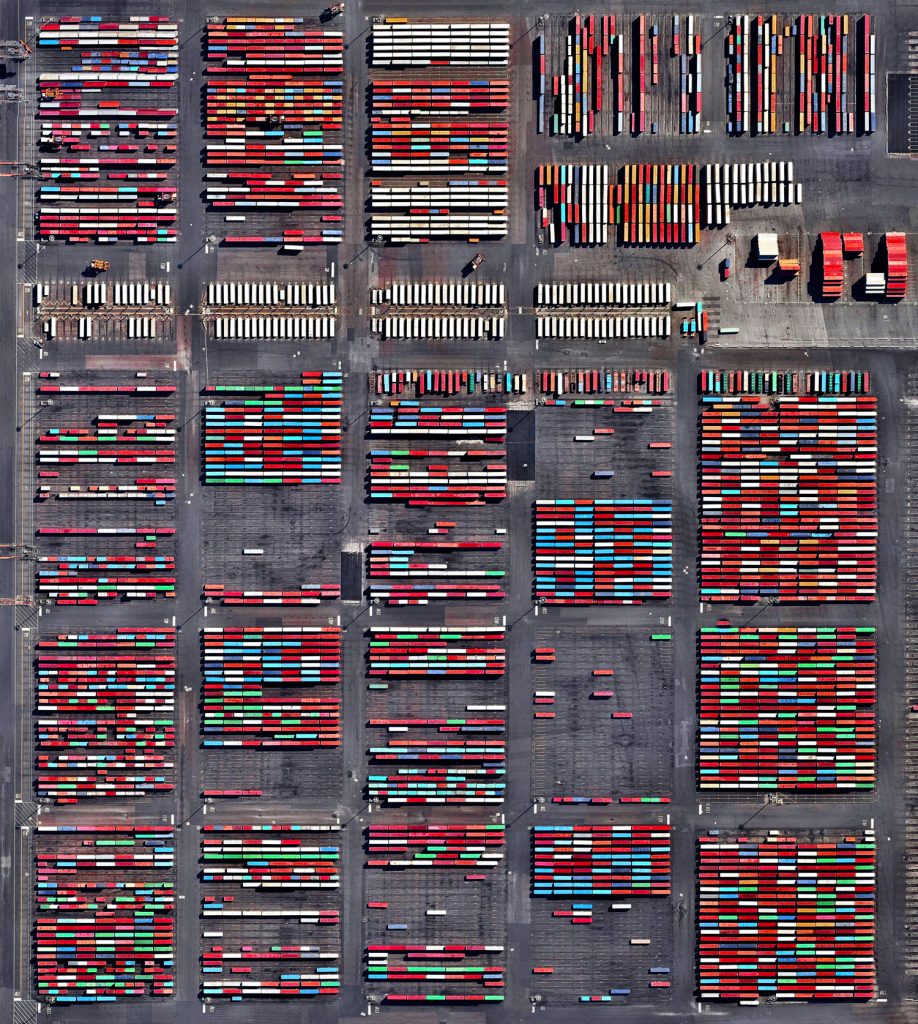
Shipping containers are stacked at the Port Newark Container Terminal in Newark, New Jersey, USA. The massive facility handles over 600,000 shipping containers every year and has begun expansion projects that will increase annual capacity to 1.1 million containers by 2030.
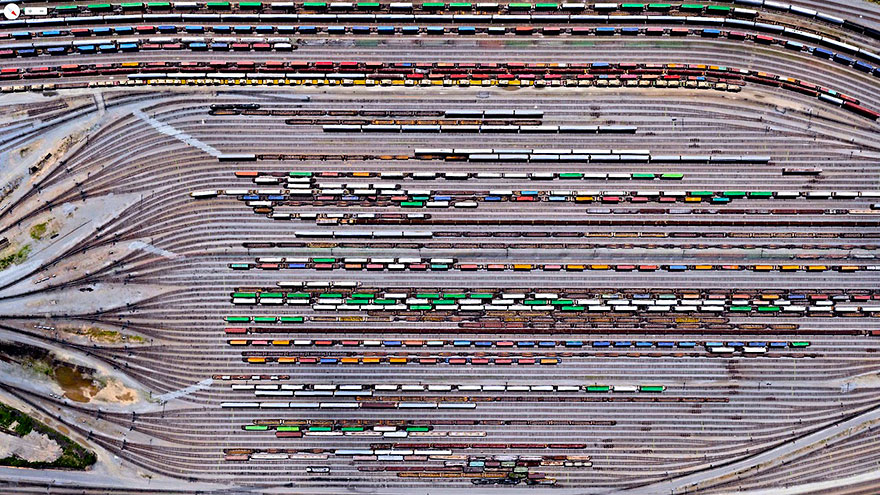
The Norfolk Southern Railway operates 21,300 miles of track in 22 states, primarily in the Southeastern US. Inman Yard in Atlanta, Georgia, pictured here, is one of the major railyards that houses a portion of the operation’s 3,648 locomotives and 79,082 freight cars.
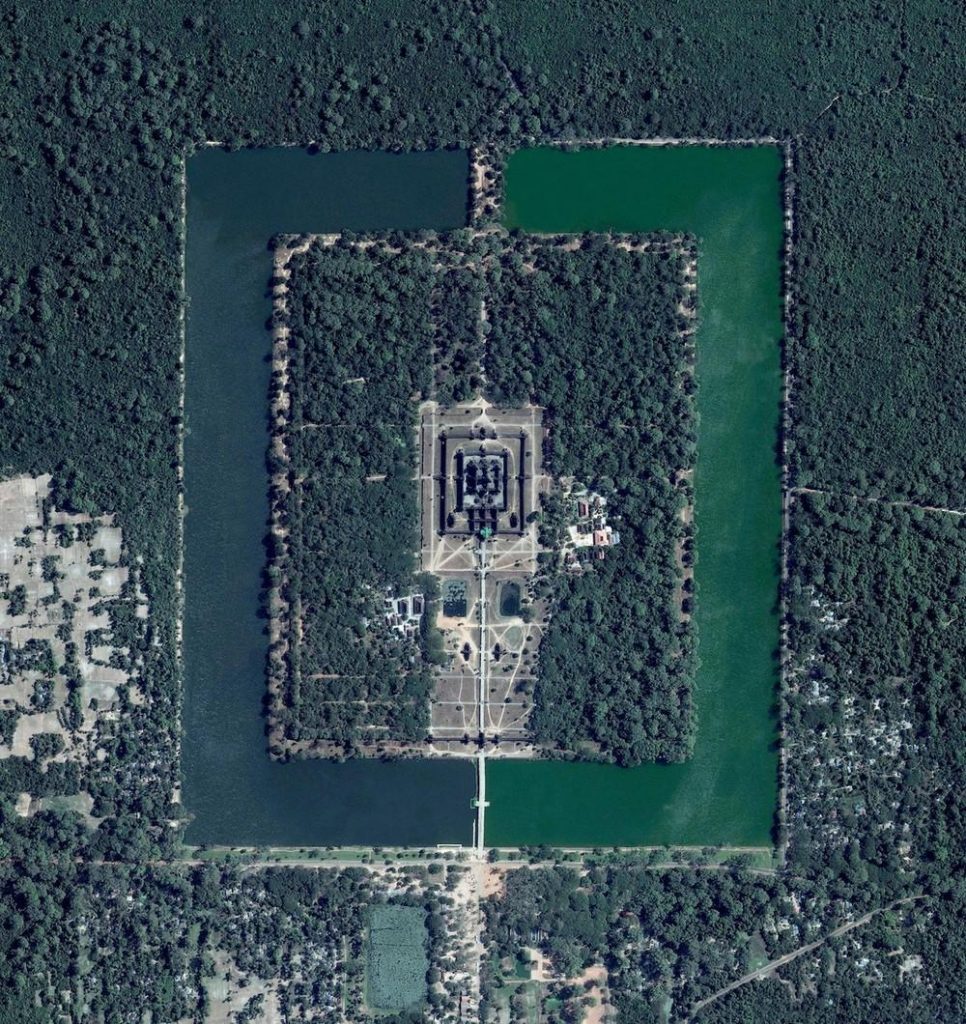
Angkor Wat, a temple complex in Cambodia, is the largest religious monument in the world (first it was Hindu, then Buddhist). Constructed in the twelfth century, the 820,000 square meter (8.8 million square feet) site features a moat and forest that surround a massive temple at its center.
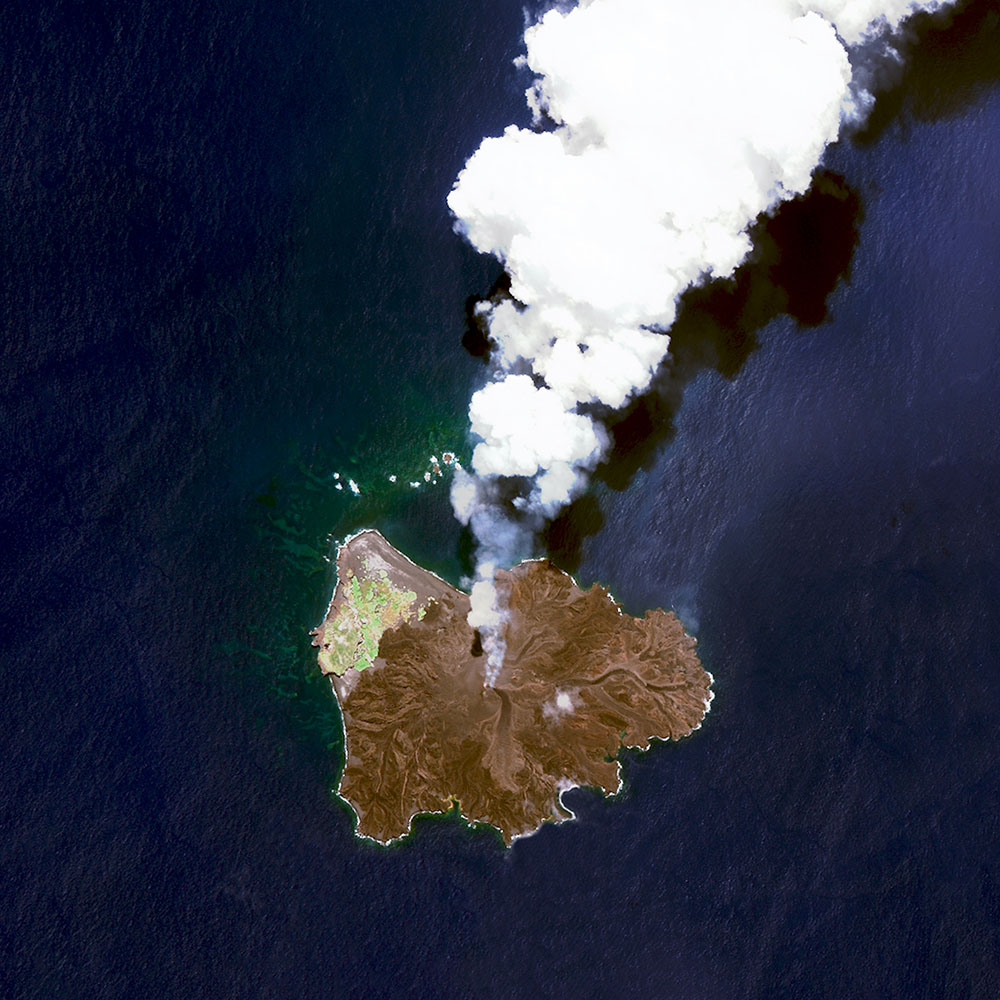
Nishinoshima is a volcanic island located 940 kilometers (584 miles) south of Tokyo, Japan. Starting in November 2013, the volcano began to erupt and continued to do so until August 2015. Over the course of the eruption, the area of the island grew in size from 0.06 square kilometers (0.02 square miles) to 2·3 square kilometers (0·89 square miles).
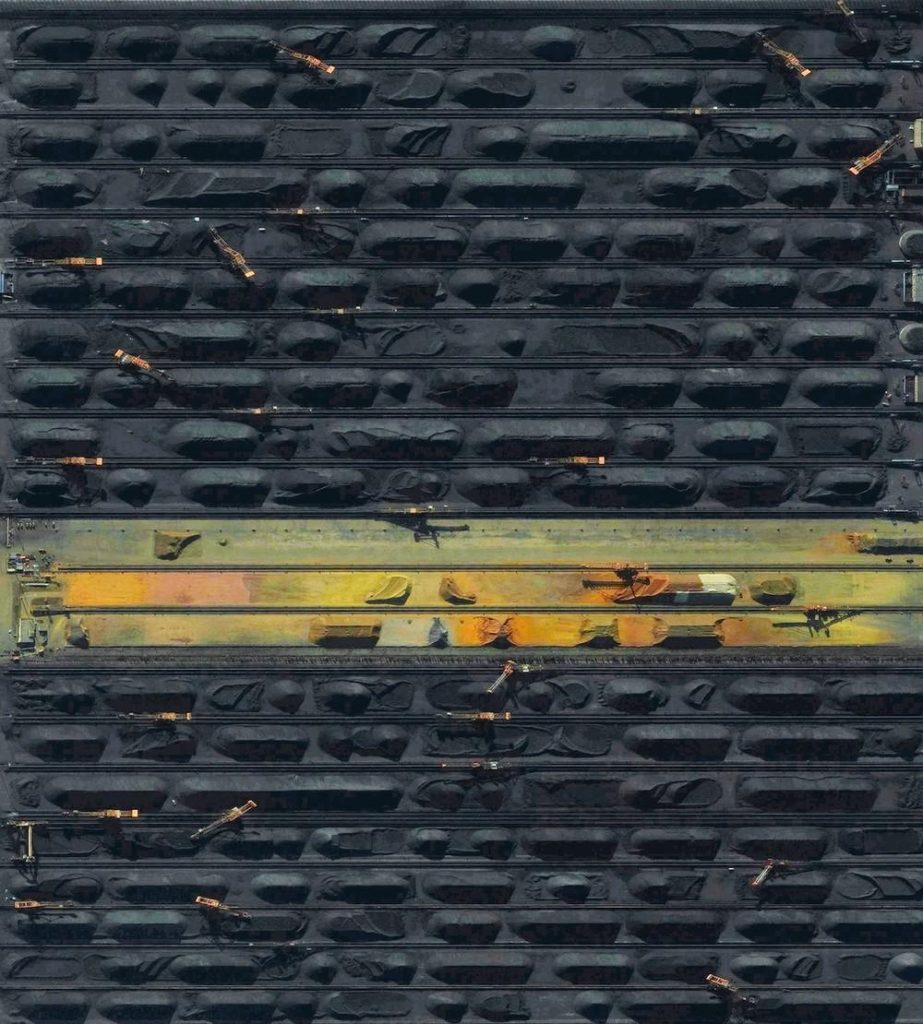
The coal terminal at the Port of Qinhuangdao in China is the largest coal shipping facility in the country. From here, approximately 210 million tons of coal are transported to coal-burning power plants throughout southern China every year.

Dendritic drainage systems are seen around the Shadegan Lagoon by Musa Bay in Iran. The word ‘dendritic’ refers to the pools’ resemblance to the branches of a tree, and this pattern develops when streams move across relatively flat and uniform rocks, or over a surface that resists erosion.
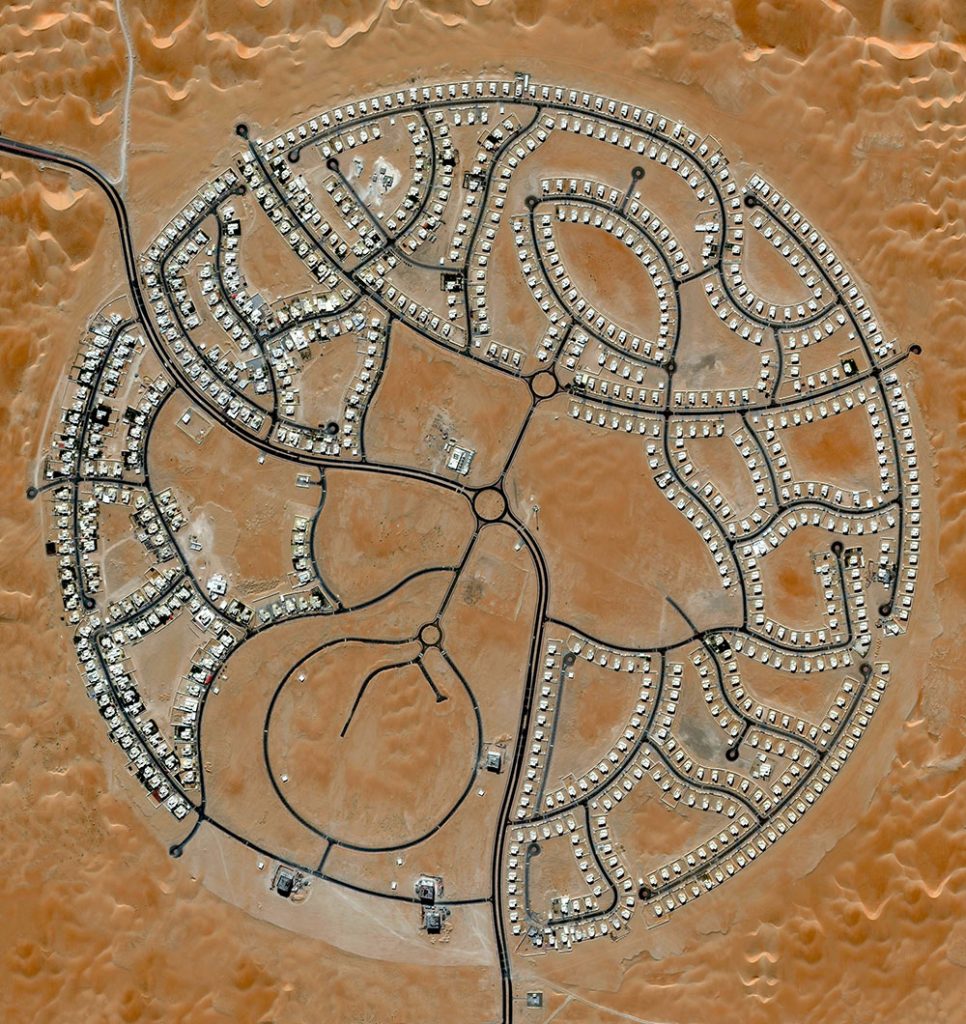
The villas of marabe-al-dhafra in abu-dhabi-United Arab Emirates-are home to approximately 2000 people.
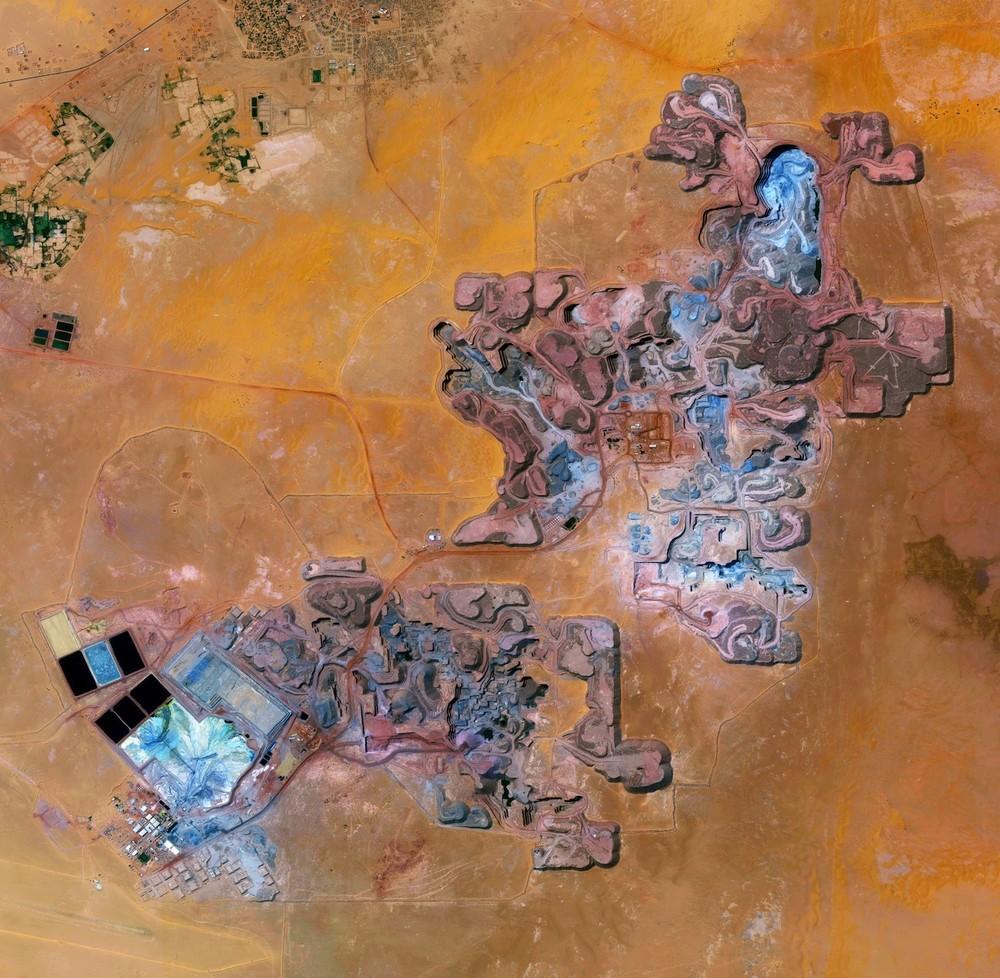
The Arlit uranium mine is located in Arlit, Niger. French nuclear power generation, as well as the French nuclear weapons program, are both dependent on the uranium that is extracted from this mine in the former French colony – more than 3,400 tons per year.
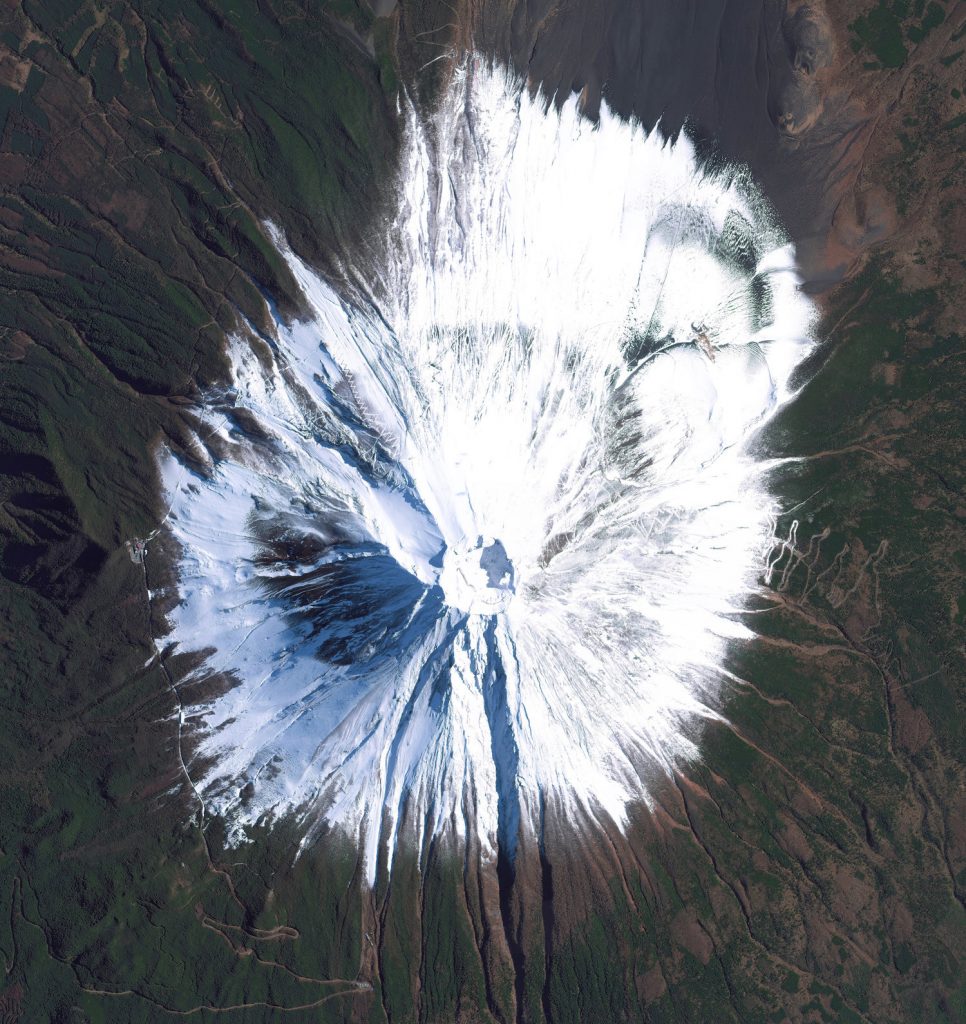
Mount Fuji is an active volcano and the tallest peak in Japan, rising 3,776 meters (12,389 feet). As seen in this Overview, Fuji has an extremely symmetrical cone, which is snow capped several months of the year.
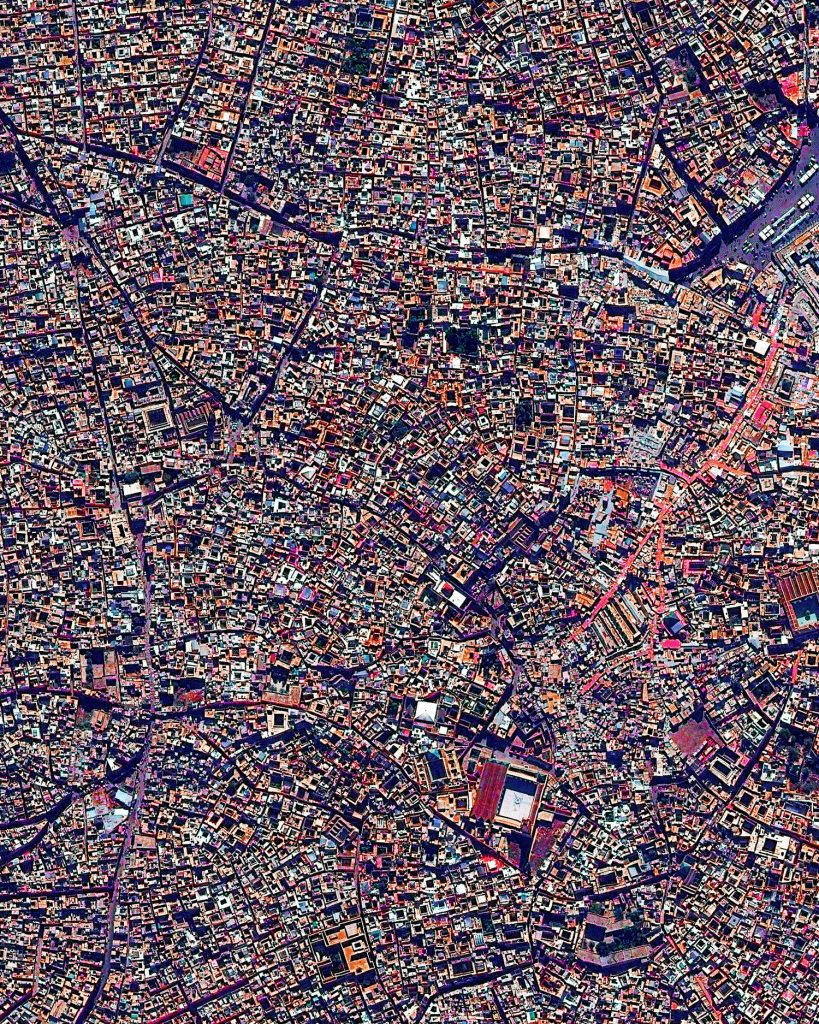
The medina quarter in Marrakesh, Morocco is characterized by its winding, maze-like streets. Because the intricately connected honeycomb of alleyways narrows to less than a meter wide (~ 3 feet) at certain spots, the area is generally free from car traffic.
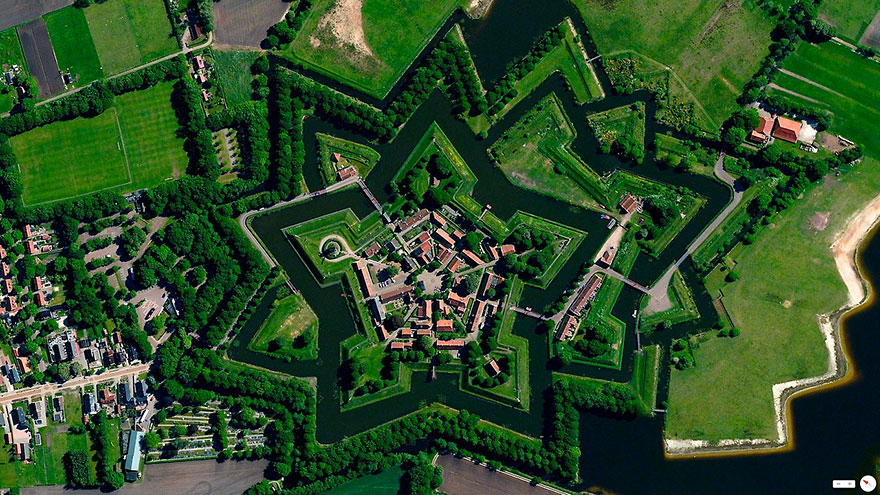
Bourtange is a village with a population of 430 in the municipality of Vlagtwedde in the Netherlands. The star fort was built in 1593 during the Eighty Years’ War when William I of Orange wanted to control the only road between Germany and the city of Groningen. Bourtange was restored to its mid-18th-century state in 1960 and is currently used as an open-air museum.
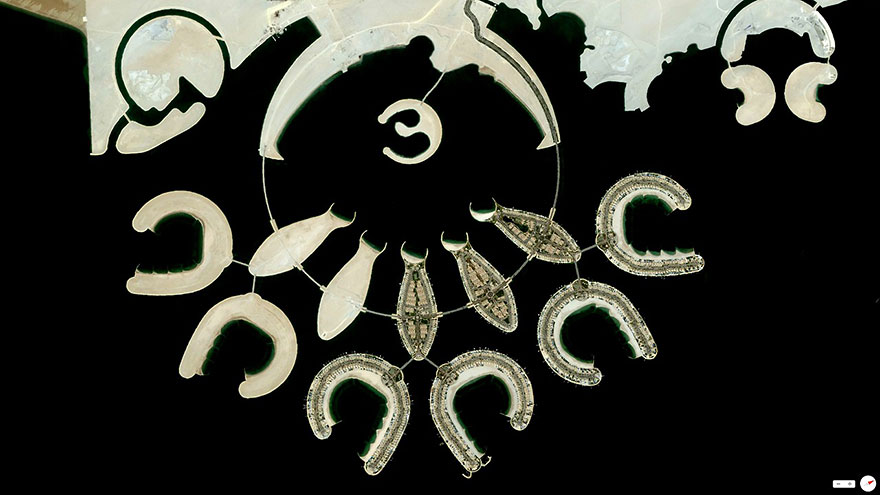
Durrat al Bahrain will consist of 15 connected artificial islands including six atolls, five fish-shaped and two crescent-shaped. Construction costs are estimated at $6 billion.
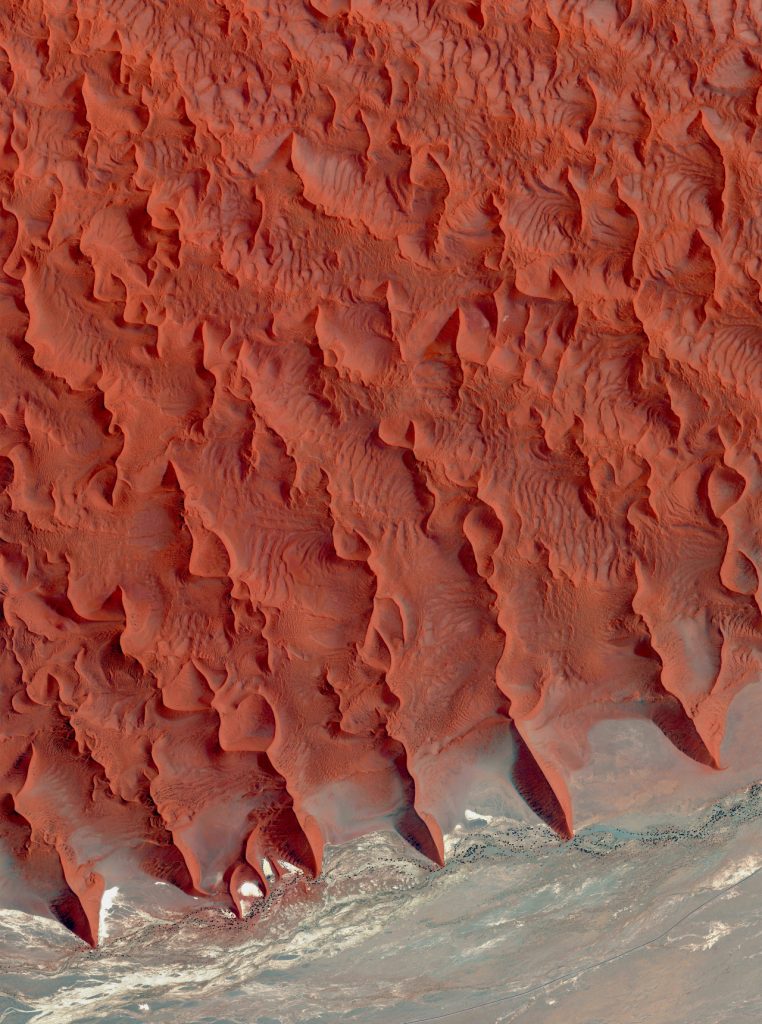
Sossusvlei is a salt and clay pan located on the edge of the Namib Desert in Namibia. These reddish sand dunes of the desert, seen in the top half of this Overview, are among the tallest in the world, with many rising more than 656 feet (200 meters.)
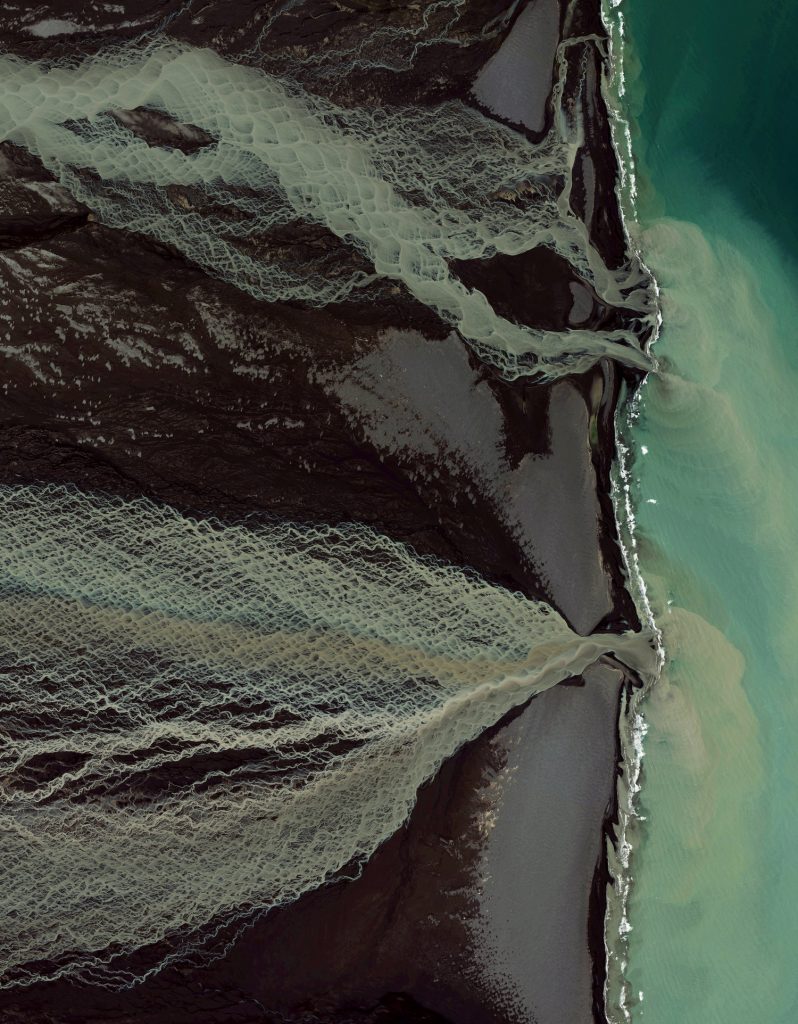
Glacial melting and flooding occurs every year by the Skafta River in Iceland. As the water travels down towards the North Atlantic Ocean, incredible patterns are created on the hillsides. Rising lava, steam vents, or newly opened hot springs can all cause this rapid ice melt, leading to a sizable release of water that picks up sediment as it flows down from the glaciers.
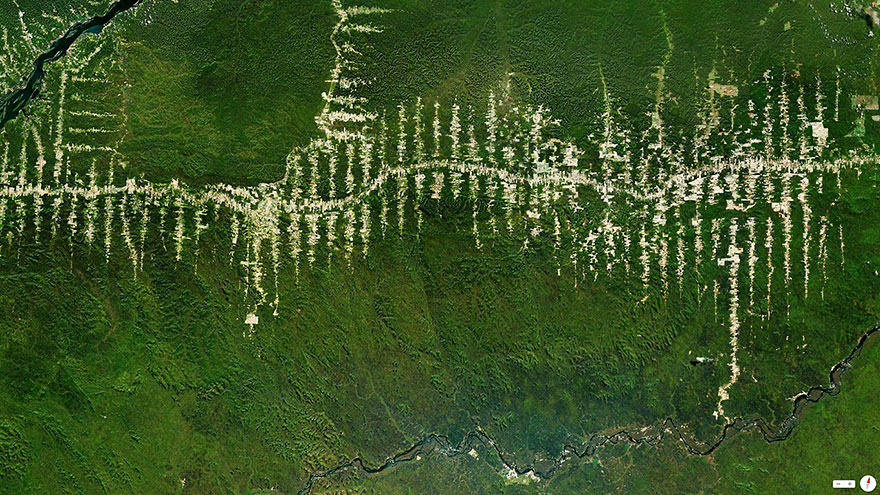
Clearcutting operations in the Amazon rainforest of Para Brazil branch out from one of the state’s central roads.
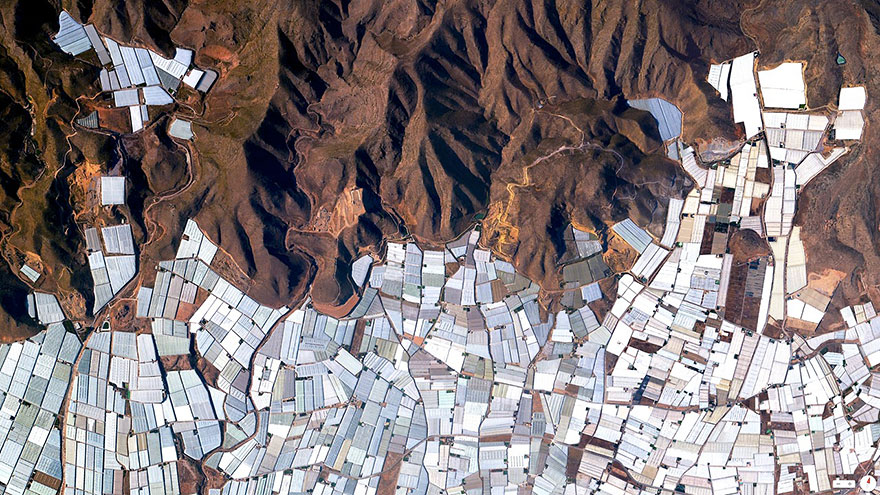
Plasticulture refers to the practice of using plastic materials in agricultural applications. This is visible in the plains and valleys of Almeria, Spain where nearly 20,000 hectares (about 50,000 acres) are covered by these greenhouse structures.
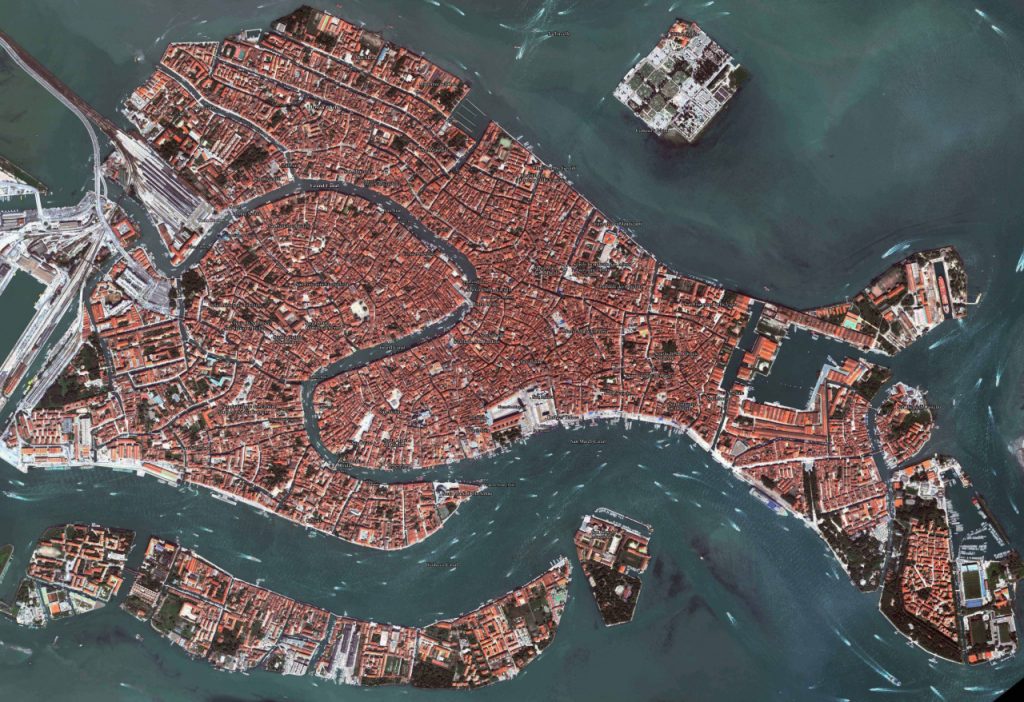
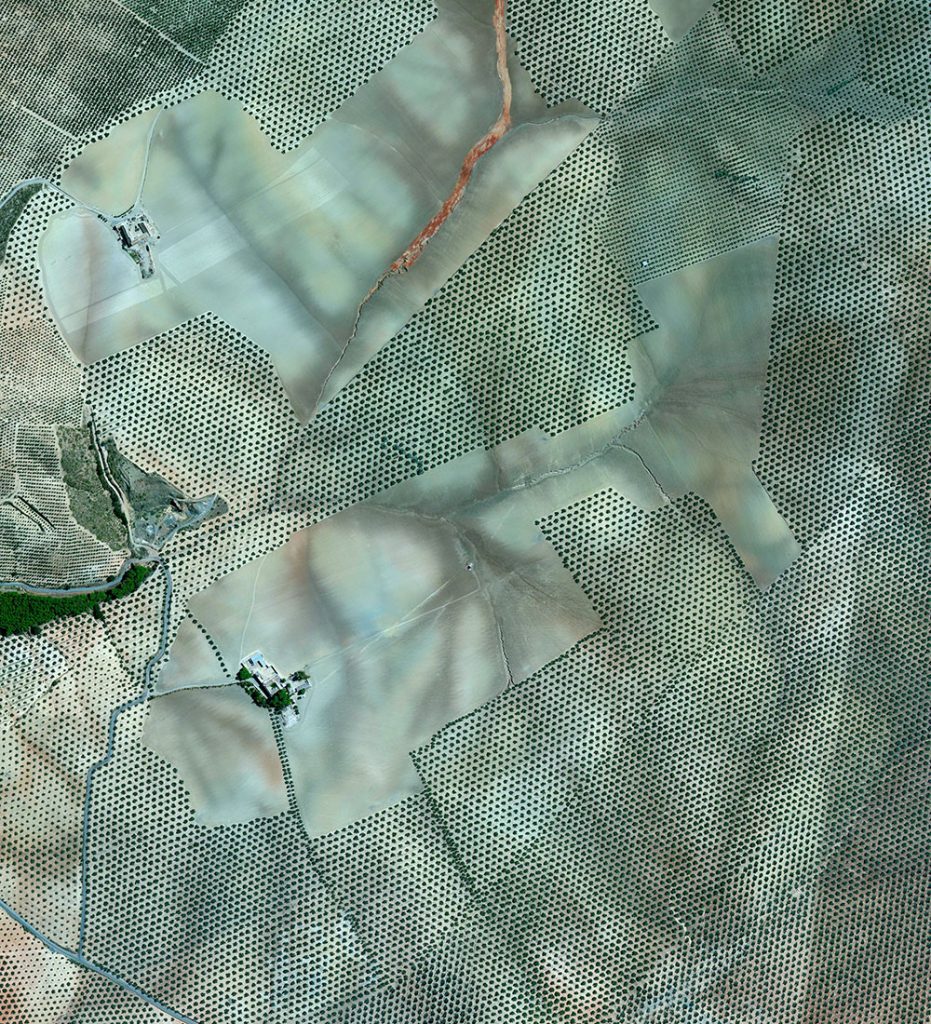
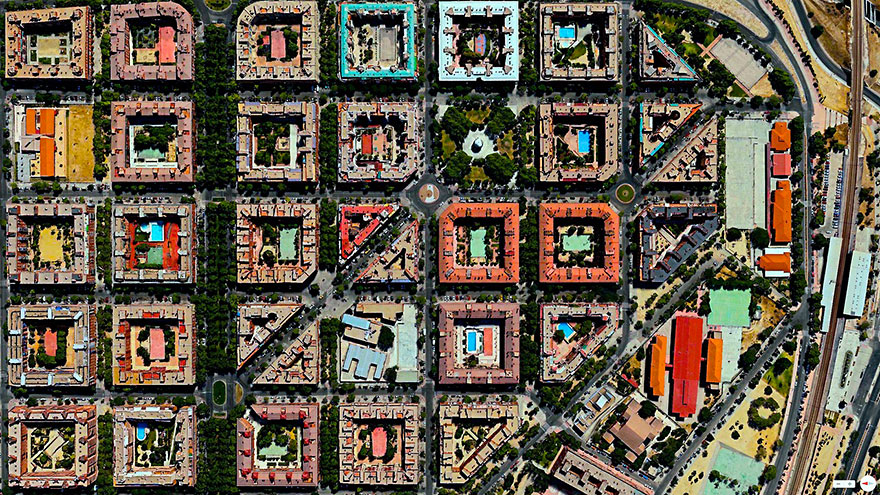
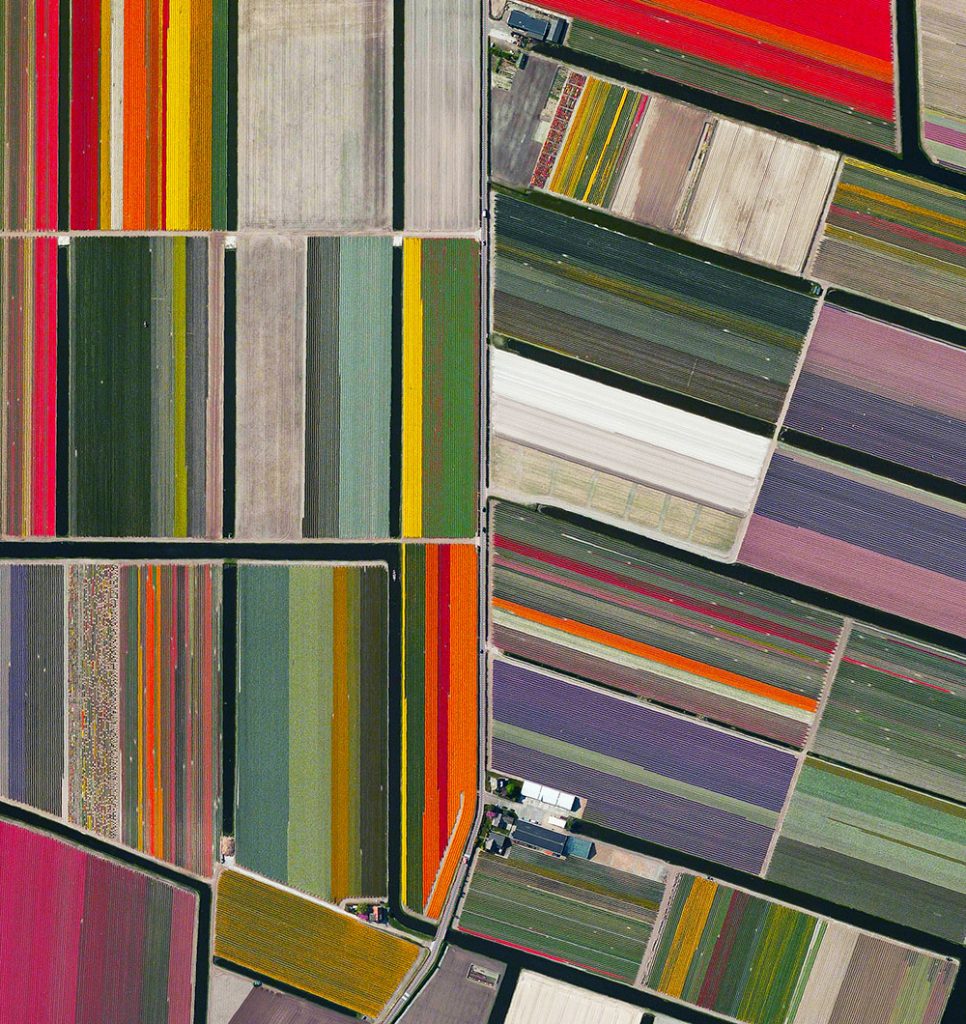
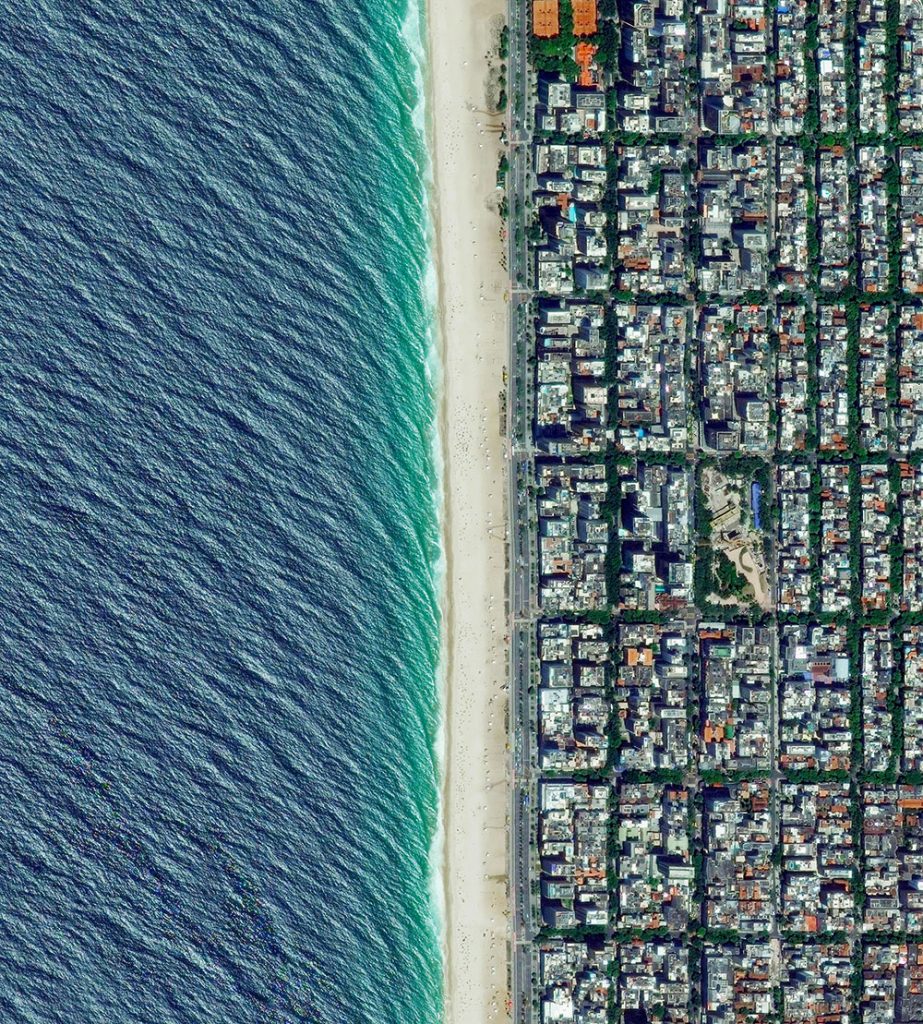
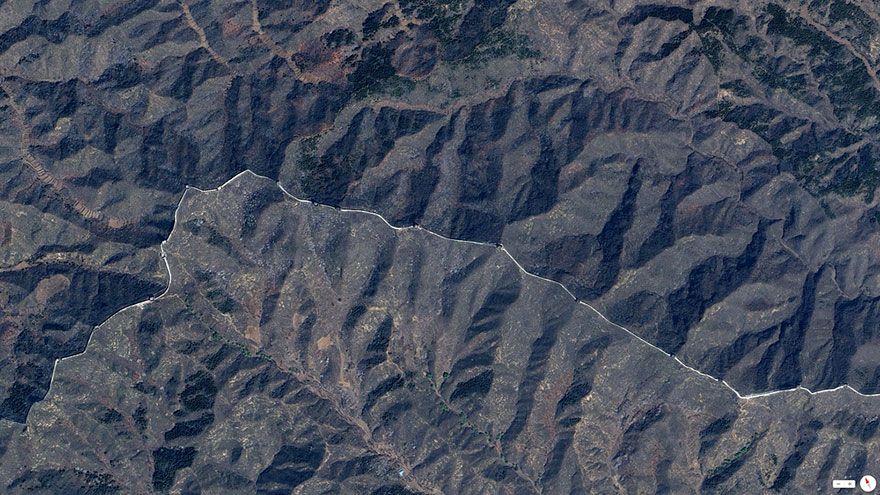

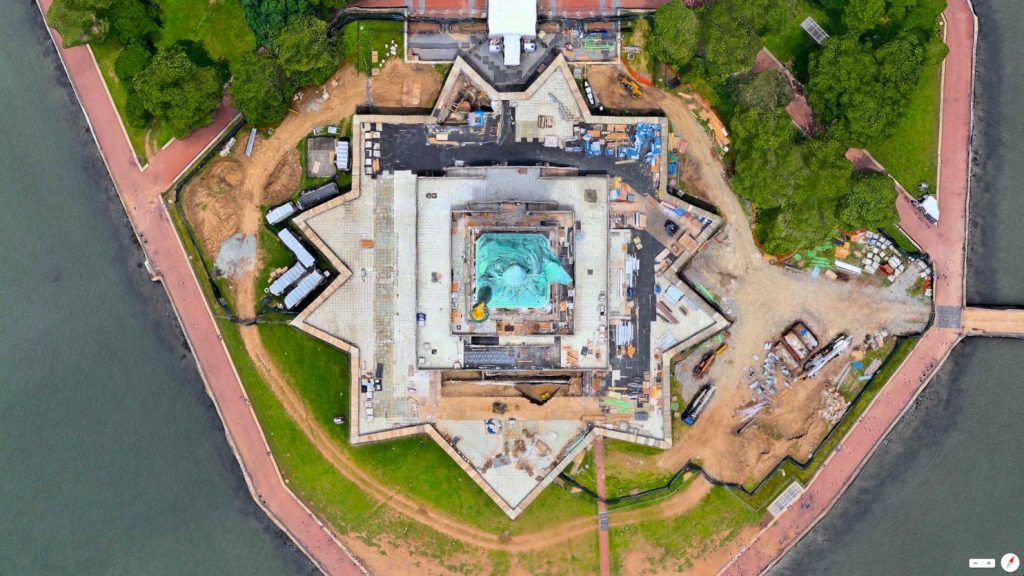
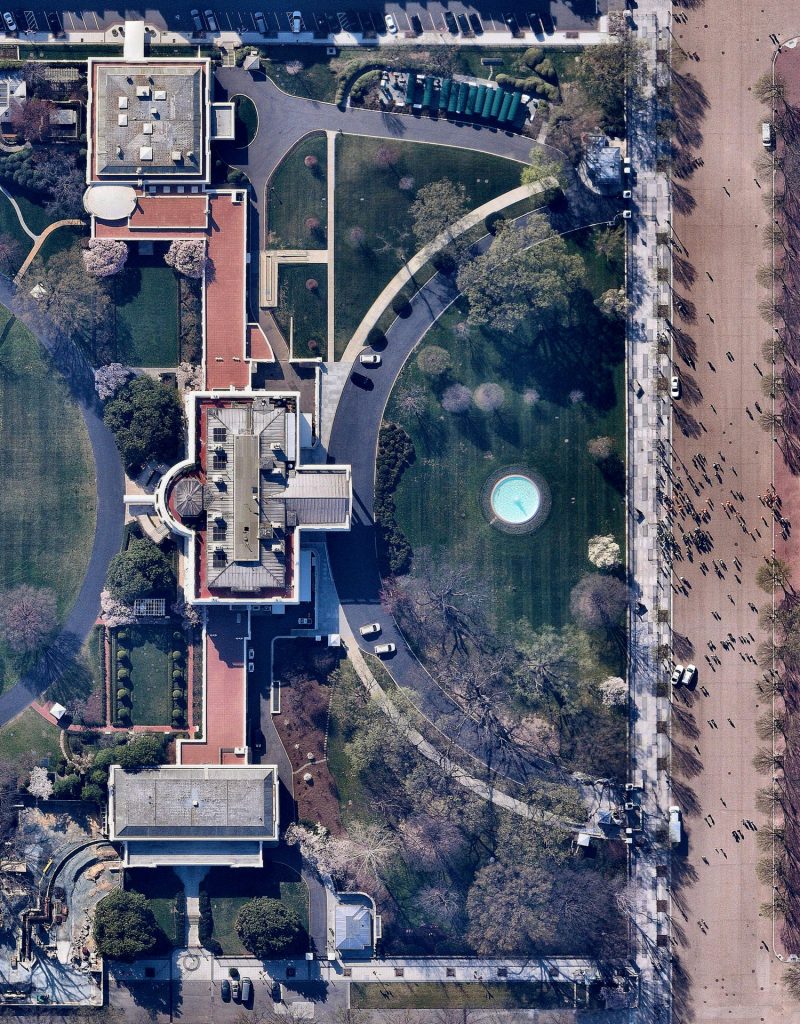
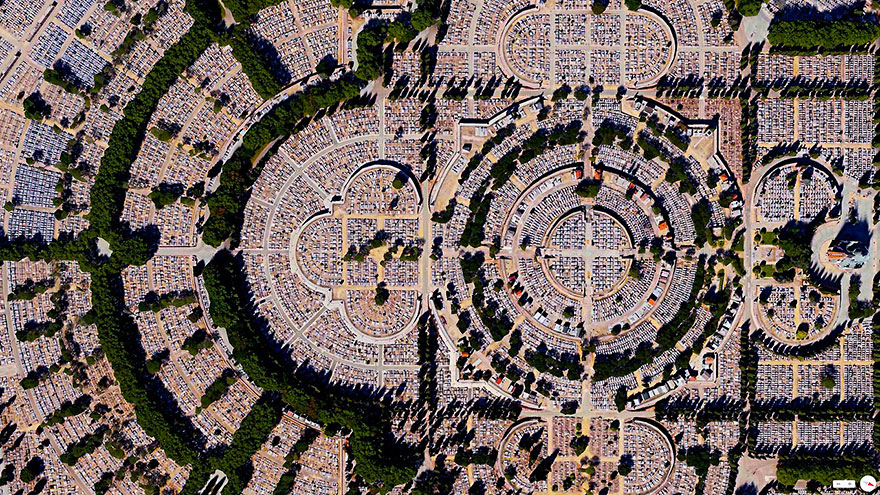
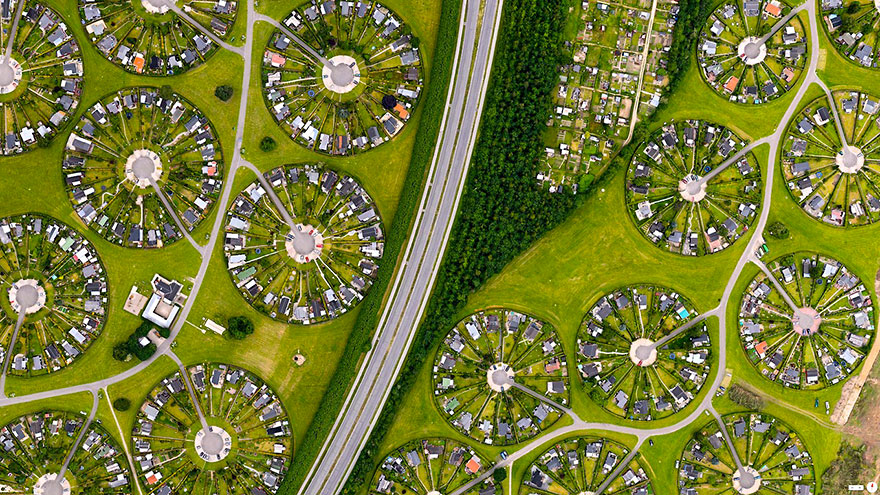
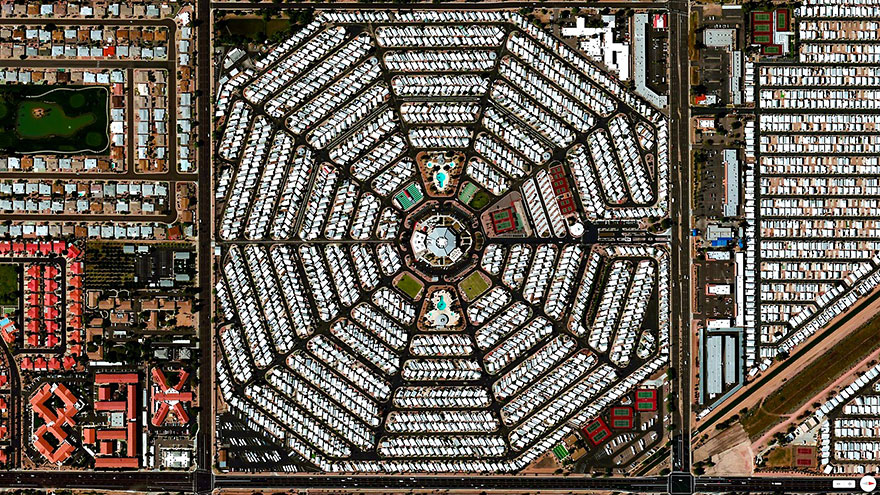
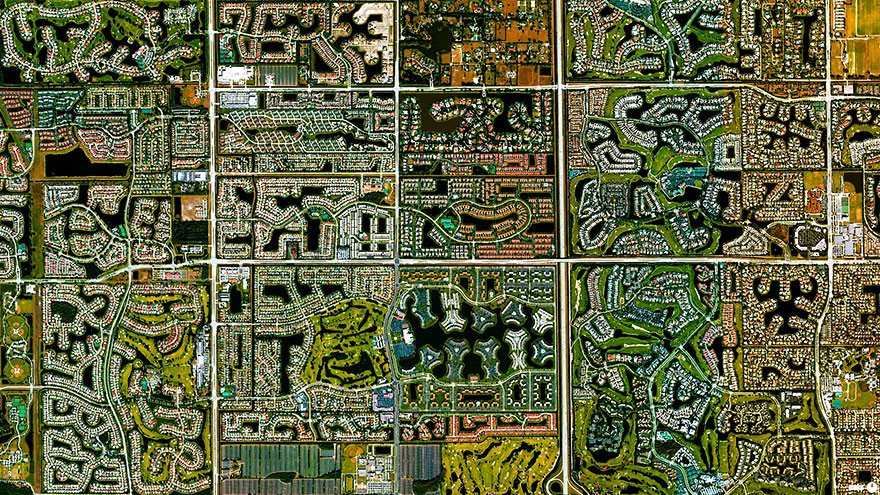
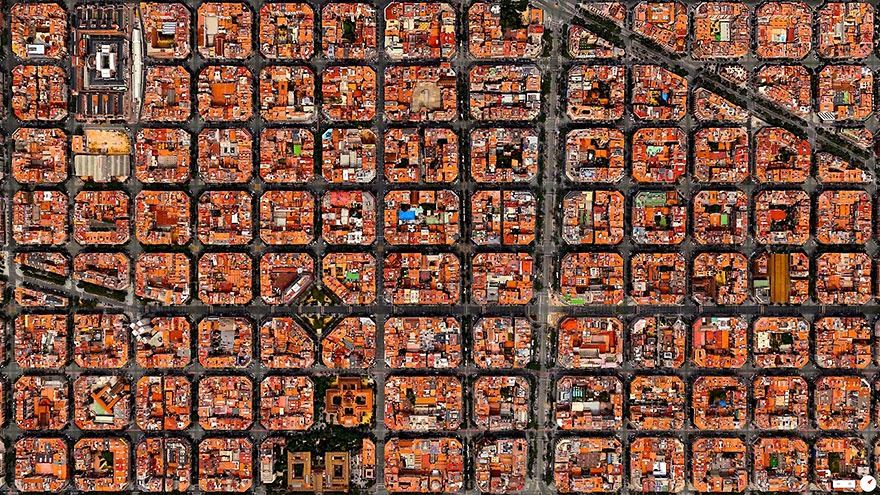
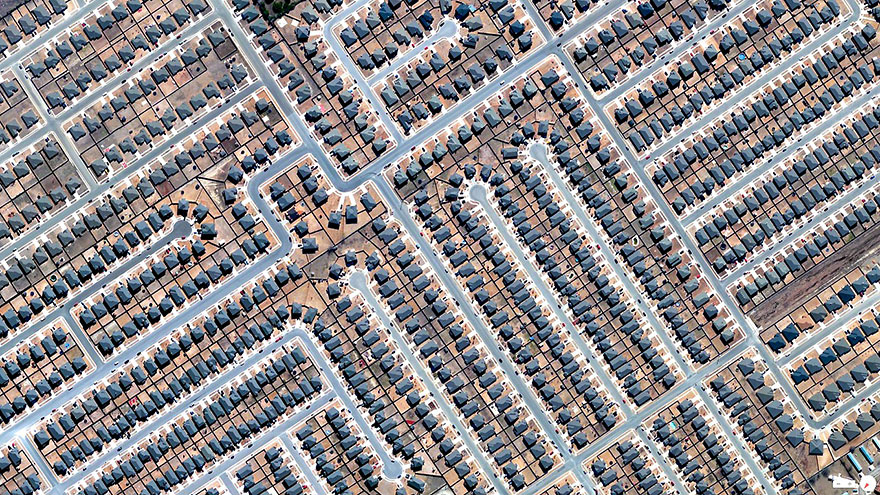
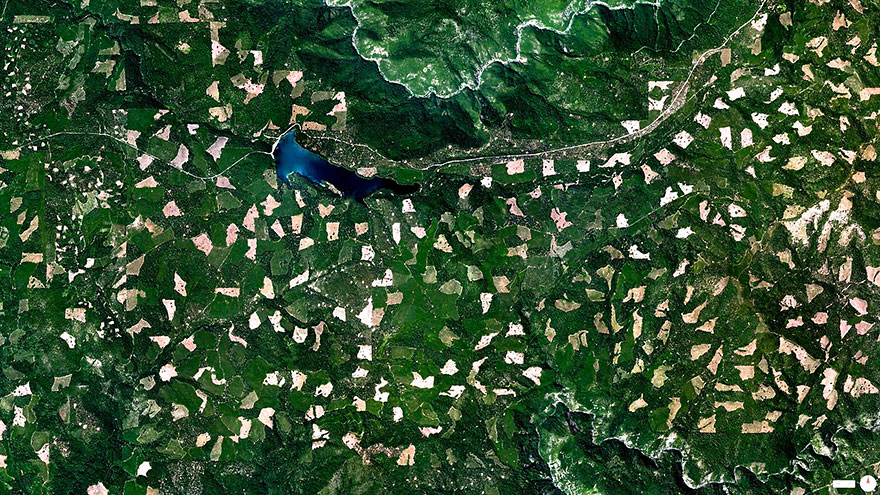
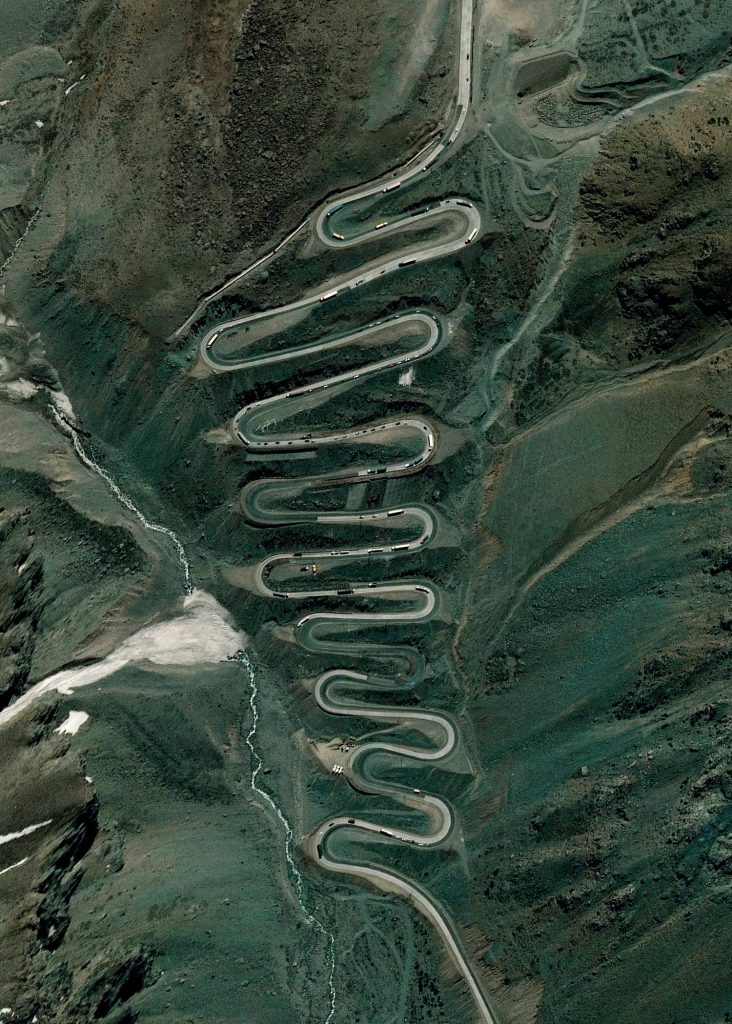
No comments:
Post a Comment
Please leave a comment-- or suggestions, particularly of topics and places you'd like to see covered